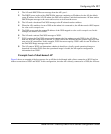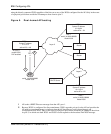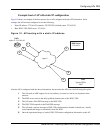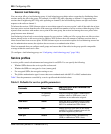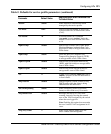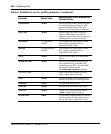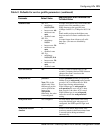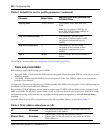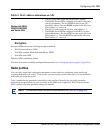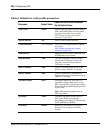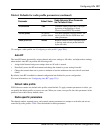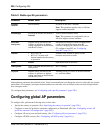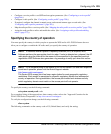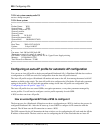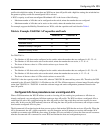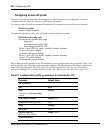
Configuring APs 225
Nortel WLAN—Security Switch 2300 Series Configuration Guide
Encryption
Encrypted SSIDs can use the following encryption methods:
• Wi-Fi Protected Access (WPA)
• Non-WPA dynamic Wired Equivalent Privacy (WEP)
• Non-WPA static WEP
Dynamic WEP is enabled by default.
(For more information, including configuration instructions, see “Configuring user encryption” (page 291).)
Radio profiles
You can easily assign radio configuration parameters to many radios by configuring a radio profile and
assigning the profile to the radios. To use a radio, you must assign a profile to the radio. You can enable the
radio when you assign the profile.
Table 4 summarizes the parameters controlled by radio profiles. Generally, the only radio parameters
controlled by the profile that you need to modify are the SSIDs and, if applicable, Wi-Fi Protected Access
(WPA) settings. The other parameter settings are standard.
Radios and SSIDs
2330/2330A/2330B
and Series 2332
• The 802.11b/g radio equals the AP base MAC address.
• The BSSIDs for the SSIDs configured on the 802.11b/g radio
end in even numbers. The first BSSID is equal to the AP’s
base MAC address. The next BSSID is equal to the AP’s base
MAC address + 2, and so on.
• The 802.11a radio equals the AP base MAC address + 1.
• The BSSIDs for the SSIDs configured on the 802.11a radio
end in odd numbers. The first BSSID is equal to the AP’s base
MAC address + 1. The next BSSID is equal to the AP’s base
MAC address + 3, and so on.
Note. For information about the auto-tune parameters, see Table 20 on page 324.
Table 3: MAC address allocations on APs



